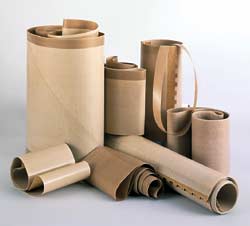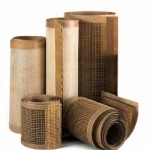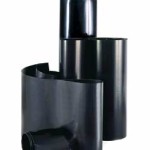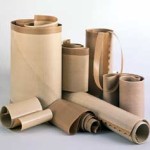Description
Tear Resistant (23 Series)
The DuraFab® Tear Resistant belts are specially processed to increase their overall flexibility and tear resistance, thus making them the strongest, most durable line of PTFE coated fiberglass belting. These fabrics are manufactured from woven fiberglass substrates, leave a minimal fabric impression, possess an optimal PTFE (Fluon®) content, and have a proprietary additive for flexibility. DuraFab® Tear Resistant Belting has excellent flexibility and is ideal for use in small pulley and high-speed packaging applications. | ||||||||||||||||||||||||||||||||||||||||||||||||||
DuraFab® PTFE Coated Belt Characteristics | ||||||||||||||||||||||||||||||||||||||||||||||||||
DuraFab® Belts are engineered to retain the distinctive properties of PTFE; however, by adding a glass fabric to the matrix, AFC is able to obtain the added benefits of dimensional stability, excellent tensile strength and extremely low elongation (<1%). DuraFab® Belts have received USDA approval for food processing and handling, and are FDA compliant (21 CFR177.1550). In addition, the DuraFab® belts can operate in temperatures from -400°F (-240°C) under static conditions and -100°F (-73°C) under dynamic conditions up to 550°F (288°C). | ||||||||||||||||||||||||||||||||||||||||||||||||||
Typical Applications | ||||||||||||||||||||||||||||||||||||||||||||||||||
Packaging:
Food Products:
Printing and Textiles:
Pulp and Paper:
| Polymer Processing:
Building Products:
Chemical Processing:
Other:
| |||||||||||||||||||||||||||||||||||||||||||||||||
Styles Available | ||||||||||||||||||||||||||||||||||||||||||||||||||
| ||||||||||||||||||||||||||||||||||||||||||||||||||
Please note: Additional thickness and styles available upon special order and lead times may vary for different styles and widths. *Disclaimer: All figures provided in the above table are based upon ASTM D 4969-97, the Standard Specification for Polytetrafluoroethylene (PTFE) Coated Glass Fabric. The above PIW values are based upon the ASTM D828 test method and are not actual values of AFC’s materials. The above tensile values are 80% of the figures provided in Table 6 of specification D579. AFC states that its actual tensile will be greater than the above material specification and that actual tensile values will be provided upon request. Edge Tear values are based upon ASTM D1424 (Elmendorf Tearing Test) and are average values that can vary. | ||||||||||||||||||||||||||||||||||||||||||||||||||





